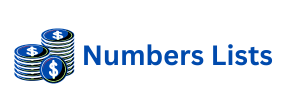Backlinks are fundamental to search engine optimization. They act as votes of confidence for your website. When another site links to yours, it signals value. Search engines like Google see these links. They use them to determine site authority. Higher authority often leads to better rankings.
Both external and internal backlink strategies are vital. Each type plays a distinct role. A strong linking profile boosts visibility. It helps users find your content. It also establishes your site as a trusted source. Understanding these links is crucial. It directly impacts your digital presence.
Implementing a robust backlink strategy is not optional. It is a core component of any effective SEO plan. Websites thrive on relevant, high-quality links. These links guide search engine crawlers. They help them understand your content structure. This understanding improves indexing and ranking potential.
Improving your website’s backlink health offers many benefits. It enhances organic traffic. It also increases domain authority over time. Investing in proper link building pays off. It creates a lasting impact on your search performance. This foundational work is essential.
Understanding Backlinks: Foundations for SEO Success
External backlinks are links from other websites to yours. They are known as inbound links. These links are powerful signals of trust. When a reputable site links to your content, your credibility rises. Search engines interpret this as an endorsement. This greatly enhances your domain authority.
Acquiring high-quality external links is paramount. Focus on relevance when seeking links. A link from a related industry site is more valuable. It shows contextual authority. Links from spammy or irrelevant sites can harm your SEO. Prioritize quality over quantity always.
Building external backlinks requires strategic effort. Content marketing is a key method. Create valuable, shareable content. This encourages others to link to it naturally. Guest posting on relevant blogs can also generate links. Ensure these are authentic and add value.
Outreach is another effective tactic. Identify industry leaders and relevant publications. Pitch your unique content to them. Explain how your resource benefits their audience. Always adhere to SEO best practices for ethical link building. This ensures sustainable growth.
Driving Authority with External Backlink Growth
Internal backlinks connect pages within your own website. They guide users and search engines alike. These links establish information hierarchy. They also distribute “link equity” throughout your site. This ensures important pages receive proper attention. It supports overall site strength.
Effective internal linking improves user experience directly. Visitors can easily navigate your content. This lowers bounce rates. It also encourages longer site visits. A logical internal link structure is key. It helps users discover related information. This boosts engagement.
Internal links also support search engine crawling. They help bots find all your important pages. Proper anchor text within these links is crucial. It tells search engines about the linked page’s content. Use descriptive, relevant keywords for anchors. Avoid generic phrases.
Developing a strong internal backlink strategy is simple. Link related articles and services together. Ensure your most important pages have many internal links pointing to them. This signals their significance. Consider linking from older, authoritative posts to newer ones. This helps with content optimization and discovery.
Optimizing Site Structure with Internal Backlinks
The true power of backlinks emerges from their synergy. External links bring in authority and trust from outside. Internal links then distribute that power efficiently within your site. A well-executed strategy combines both for maximum SEO impact. This dual approach creates a robust, crawlable website.
Think of external links as drawing water into a reservoir. Internal links are the irrigation system. They distribute that water to all parts of your garden. Without a good internal system, the water cannot reach everything. Your content needs both types of links to flourish.
Focus on creating a seamless user journey. Every link, internal or external, should be purposeful. It should add value. It should guide the user deeper into your content. This also signals content relevance to search engines. High-quality linking improves user satisfaction.
Monitor your backlink profile regularly. Use SEO tools to track new links and lost links. Identify opportunities for new external links. Continually refine your internal linking structure. This ongoing process ensures your site remains optimized. It helps maintain your competitive edge.
Holistic Linking: Combining External and Internal Backlink Strategies
Both external and internal backlinks are indispensable for SEO. External links build domain authority and trust. Internal links enhance user experience and distribute equity. Together, they form a powerful foundation. This foundation supports strong search engine rankings.
Invest time in creating a comprehensive link strategy. Prioritize quality, relevance, and user value. Continuously analyze and adapt your approach. This dedication will yield significant, lasting SEO benefits. Your website’s visibility and authority will grow. Achieve long-term digital success.
